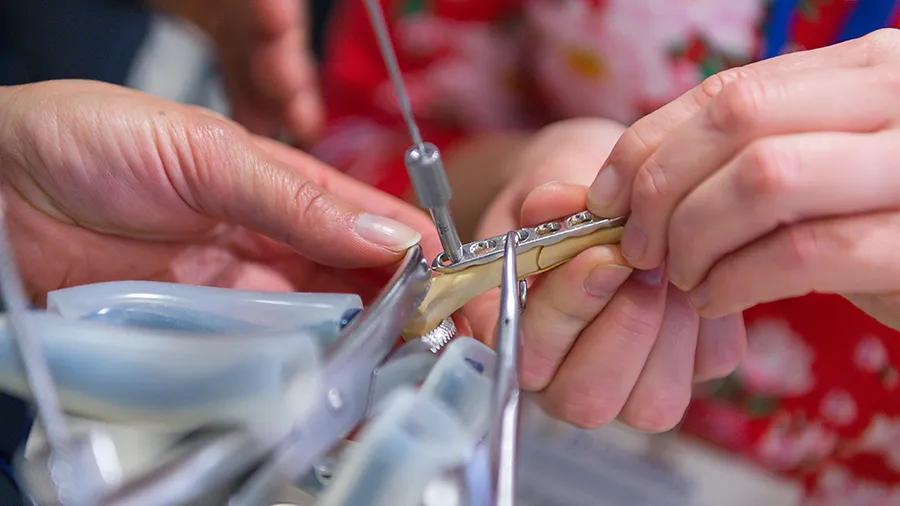Plate fixation
1. Principles/General considerations
There are few reports describing surgical treatment of sacral fractures in horses.
In most horses the fractures are closed, but open fractures can occur.
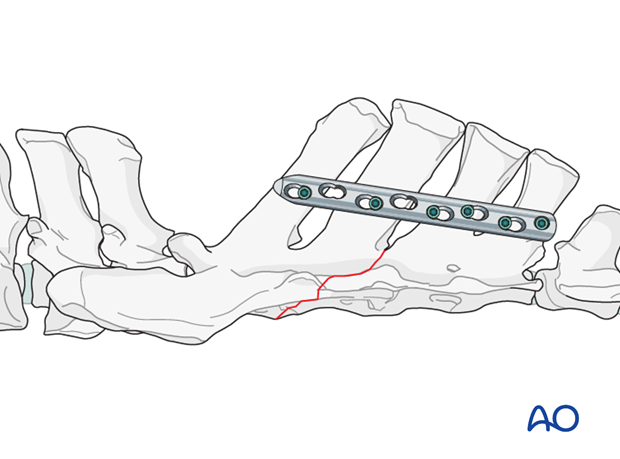
2. Preparation and approach
This procedure is performed with the patient standing through the dorsal midline approach to the coccygeal region.
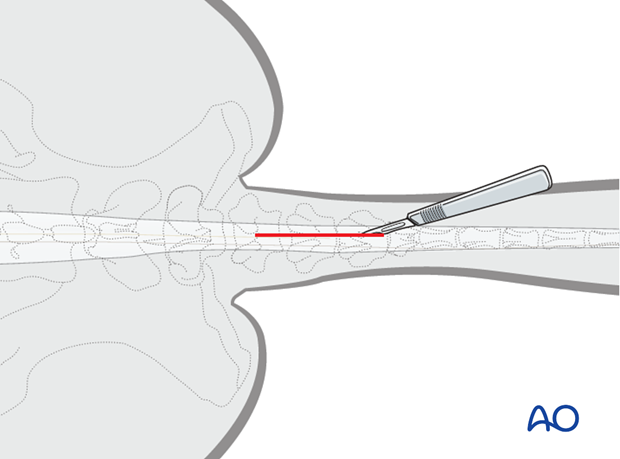
3. Reduction
Pointed reduction forceps can be used for realignment of the fragments.
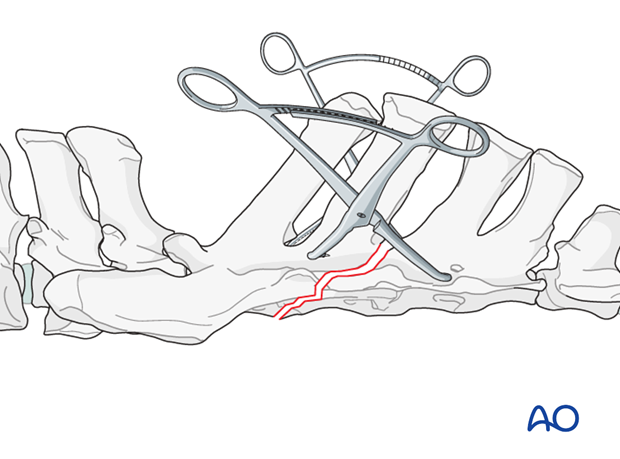
4. Fixation
Plate selection
Plates and pins can be used. The use of the locking compression plate (LCP) is preferred for fracture fixation of the vertebrae. According to the size of the patient, a small or broad 3.5/4.0 or 4.5/5.0mm LCP is used.
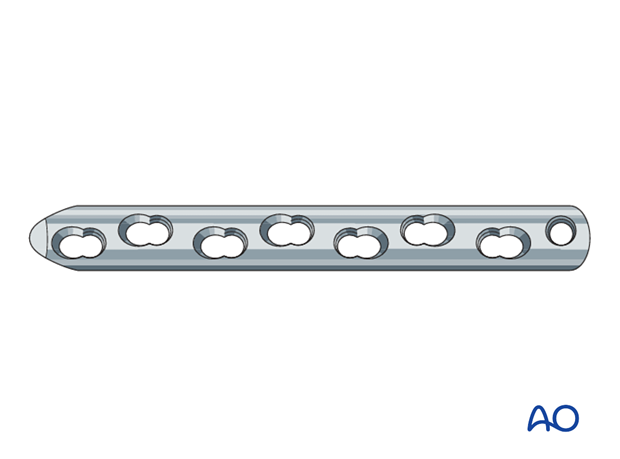
Plate preparation
Only minimal plate contouring is needed to fit the anatomical shape of the vertebra.
Accurate contouring of locking compression plates is not necessary, but it improves the closure of the soft tissue over the plate.
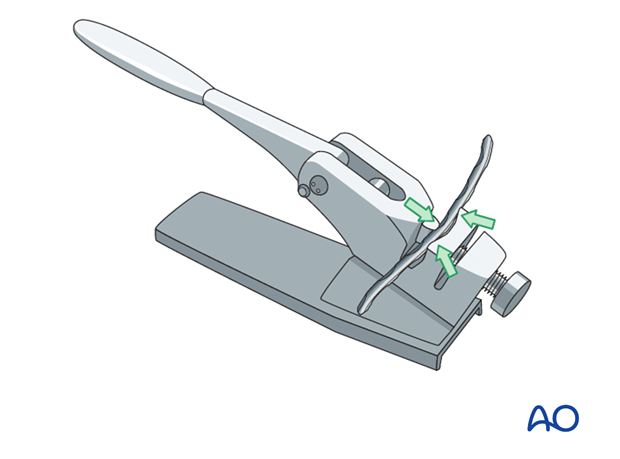
Plate application
With the reduction forceps in position, the appropriately sized plate is applied laterally to the dorsal spinous process.
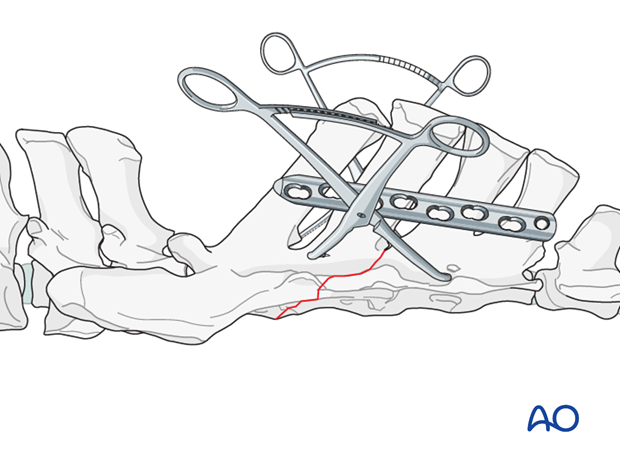
Locking-head screws are inserted into the dorsal spinous processes where possible.

5. Closure
One deep layer and the subcutaneous tissue are closed in simple continuous patterns. The skin is closed with staples. A stent bandage is applied and covered with an adhesive barrier drape to keep the incision clean and dry during recovery.
Suction drains are facultative.
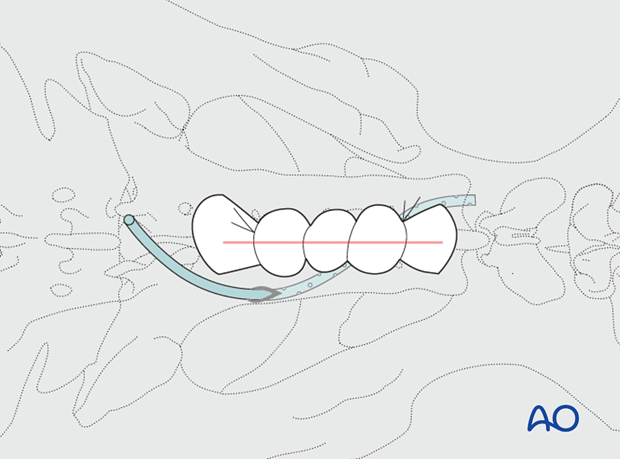
6. Aftercare
Following surgery, antibiotics and NSAIDs are routinely administered for 3 days. If indicated, they need to be continued.
Routinely follow up radiographs are taken immediately after surgery and after 2 and 4 months.
The rehabilitation protocol includes 2 months of stall confinement, followed by 1 month of hand-walking, and 2 months of progressive exercise.
Only when the ataxia has completely disappeared, the horse can return to training or other activities.
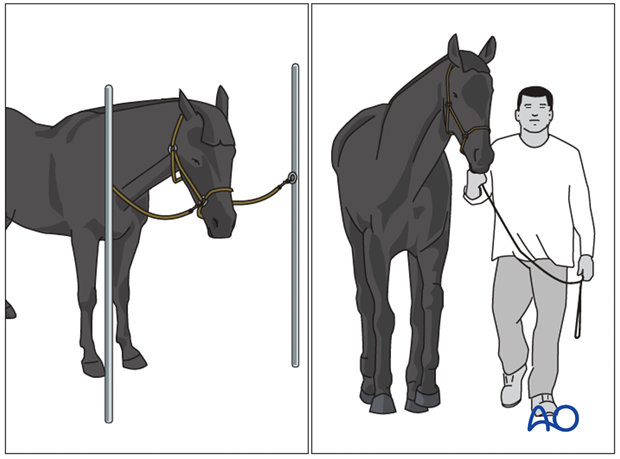
Implant removal
There is no need for implant removal, except in cases of implant loosening or surgical site infection.
